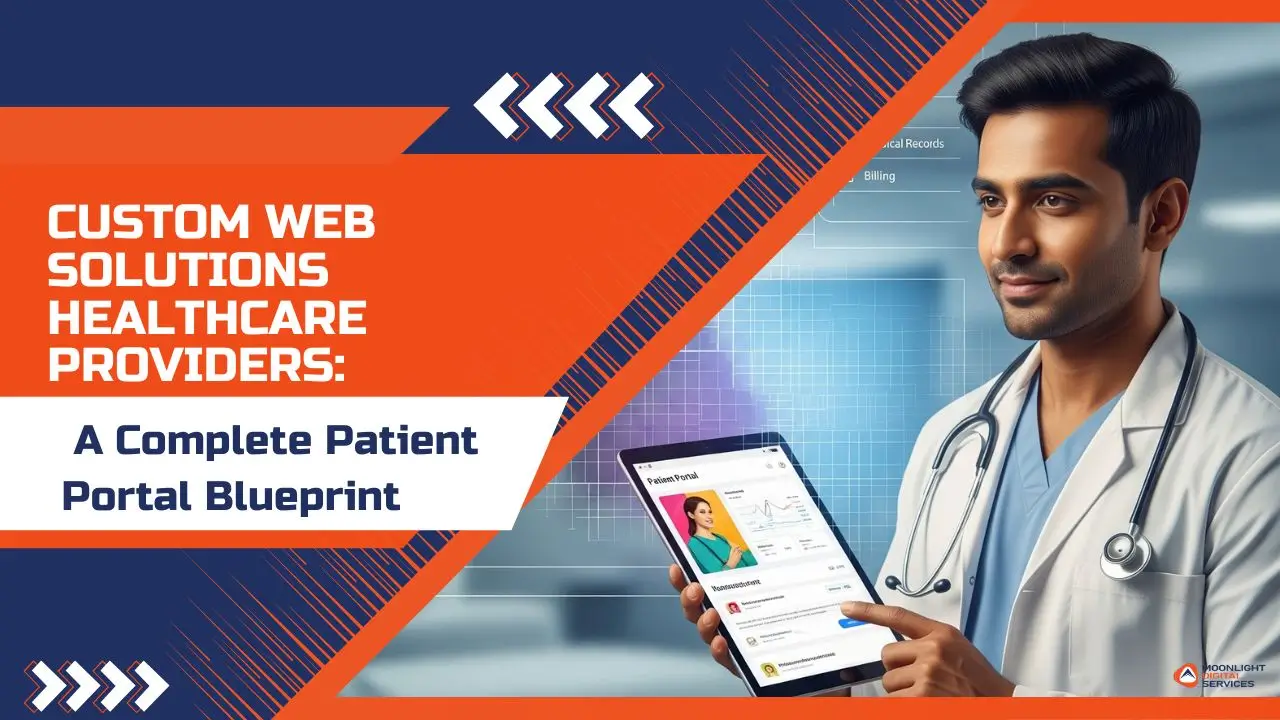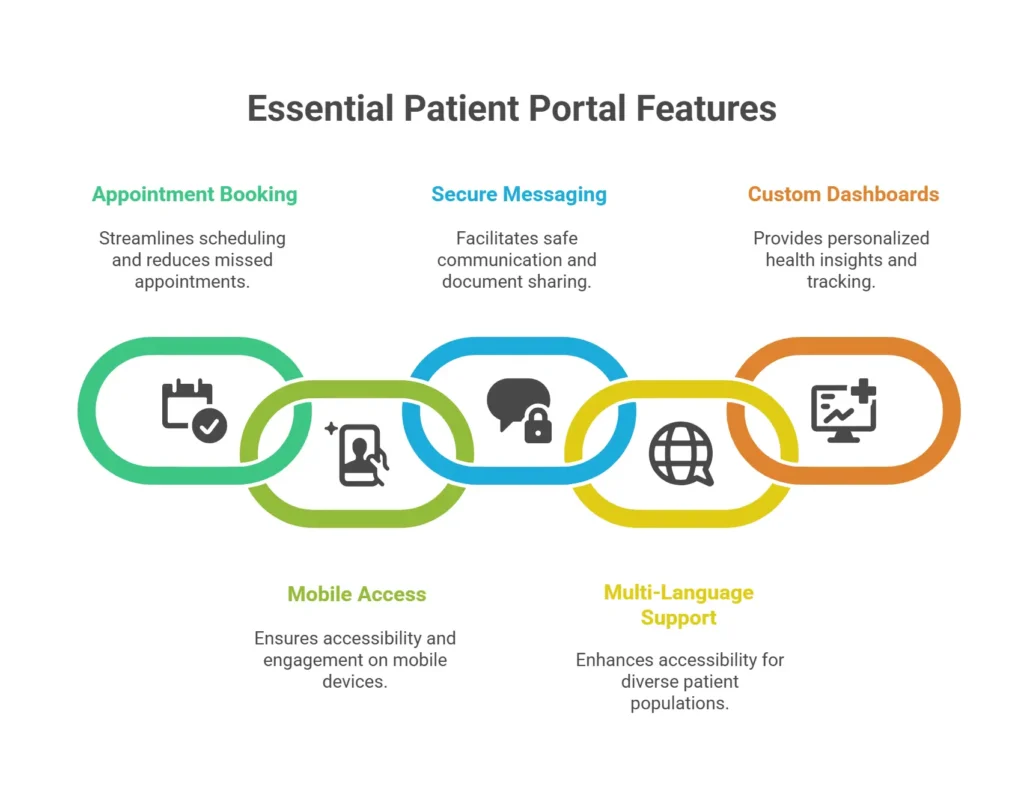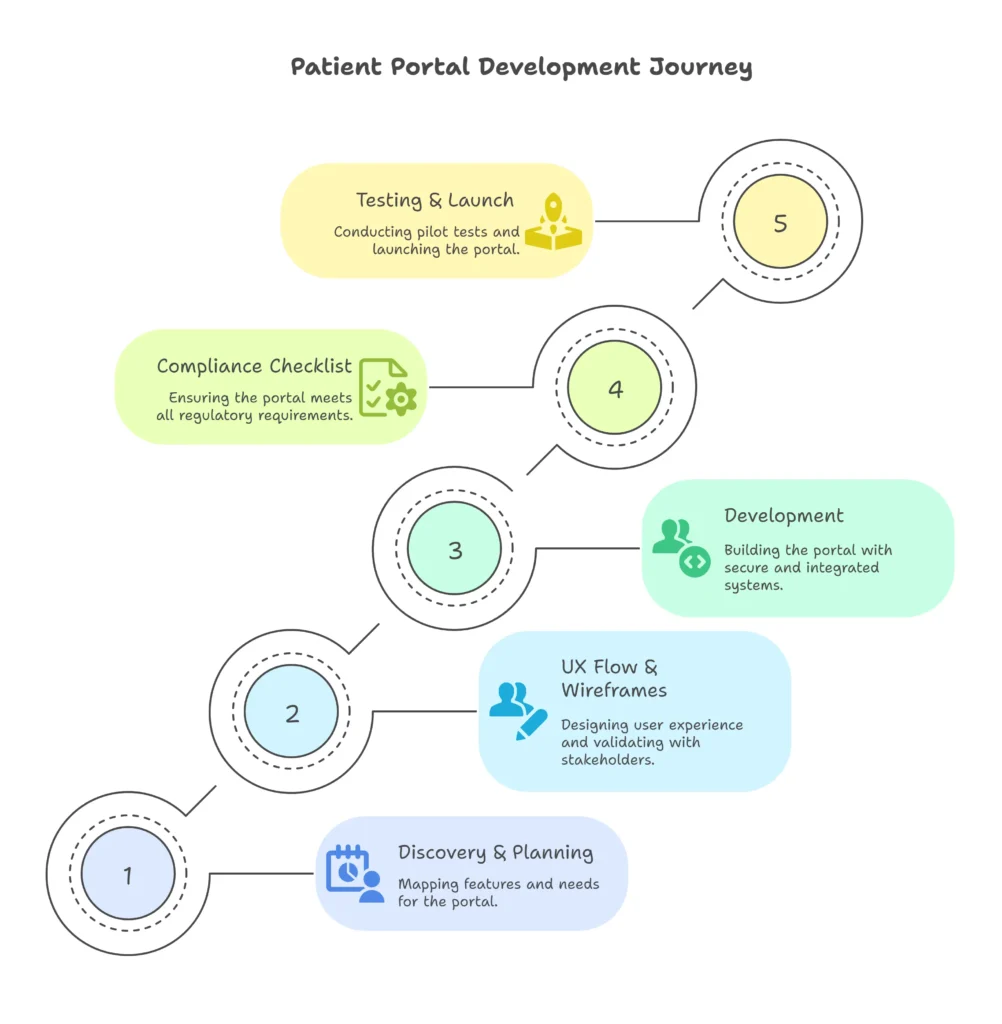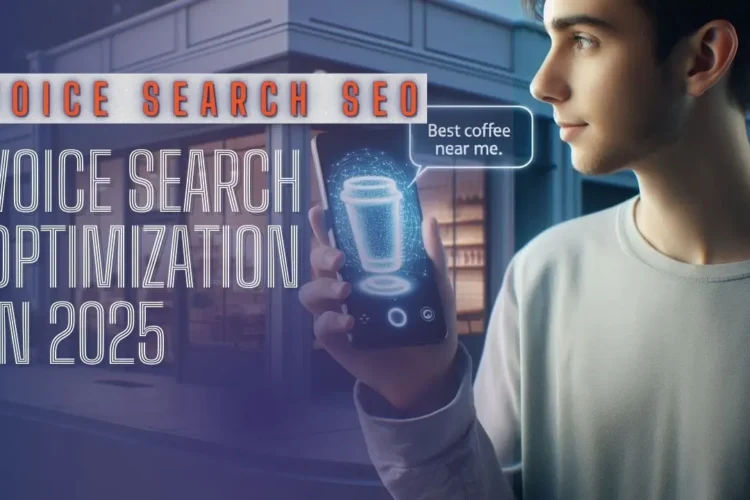
Today’s patients expect more than just appointment bookings—they want quick, easy access to their health data and care team. With custom web solutions healthcare providers can deliver a smoother, more tailored experience that saves time, improves communication, and builds trust. In this blog discover 5 portal features patients actually love (not just what developers think).

Why Healthcare Providers Should Invest in a Custom Patient Portal
Healthcare teams and patients benefit tremendously from tailored sites. Patient portal development helps streamline tasks like appointment scheduling, messaging, and lab results access. Among the healthcare web portal benefits are improved communication, reduced admin time, and better health outcomes. With a custom portal, providers control branding, data flows, integrations, and user experience—far beyond what generic platforms offer.
1. Better Patient Communication
Custom portals allow secure messaging, lab result sharing, and refill requests—all in one place. It reduces phone calls and makes care more accessible, especially for working patients or caregivers.
2. Smarter Appointment Management
Patients can schedule, confirm, or reschedule appointments online, without delays. Auto-reminders reduce no-shows and help optimize daily workflows.
3. Personalized Experience
Custom patient portal features like multilingual menus, age-specific dashboards, or specialty tools create a more patient-centered journey.
4. Staff Efficiency and Automation
Online forms, pre-visit checklists, and e-consents reduce admin time and avoid manual errors. Staff can focus more on clinical care.
5. Real Insights Through Analytics
Healthcare web portal benefits also include data. Dashboards reveal what features patients use most—helping clinics improve design and delivery.
6. Increased Patient Loyalty
Portals that are easy, useful, and mobile-friendly keep patients coming back. They know where to find answers without calling.
7. Built-in Compliance & Security
Patient portal development done right meets HIPAA, GDPR, and other rules. Custom solutions make it easier to control access and data handling securely.
Custom Web Solutions Healthcare Providers Value Most
A true custom web solutions healthcare providers trust includes features built to fit their workflow. This could mean a secure messaging system, real‑time lab result display, or refill request engine. Highlight custom patient portal features like live chat, e-prescriptions, and calendar sync. These features foster trust, reduce phone calls, and help staff focus on care.
Key Features of an Effective Patient Portal
A well-built portal is more than a login screen—it’s a direct connection between patients and providers. Here are some custom patient portal features that improve experience, efficiency, and care outcomes.
1. Appointment Booking & Auto-Reminders
Patients can check doctor availability, book or reschedule visits, and receive instant confirmations. Auto-reminders via email or SMS reduce missed appointments.
✅ Example: A family clinic cuts no-shows by 30% with reminder texts sent 24 hours in advance.
2. Mobile-Friendly Access
Today, over half of users access portals on mobile. A responsive layout ensures easy navigation, faster loading, and better engagement.
✅ Example: A women’s wellness center sees a jump in bookings after optimizing their portal for smartphones.
3. Secure Messaging & Document Sharing
Patients can safely message doctors, receive prescriptions, and view test results—all protected with encrypted logins and access control.
✅ Example: A diagnostic center allows patients to download lab results directly from the portal.
4. Multi-Language Support
Serving a diverse audience? Custom portals can switch between languages for better accessibility and comfort.
✅ Example: A Dubai-based clinic offers English, Arabic, and Hindi versions of their portal interface.
5. Custom Dashboards & Health Trackers
Personalized dashboards let patients see health trends, medication history, or treatment plans—making their health more visible and understandable.
✅ Example: Diabetic patients track glucose readings through a visual chart in their patient profile.

Why Mobile‑Responsive UX Matters
Many portals still lack polished mobile experiences. But recent data shows mobile users spend up to 60% of their session time on phones—often booking appointments or reviewing test results from work, on the move, or between shifts. That makes responsive UX non-negotiable.
Here’s how to sharpen a mobile-first portal:
- Fast page loading (ideally under 2 seconds)
- Thumb-friendly navigation (large buttons, minimal typing)
- Adaptive layouts that scale text, fields, and images smoothly
Failing to design responsively risks losing patient trust and engagement.
What Other Portals Often Miss—And How to Avoid It
Lack of Case Data on Usage Improvements
Many guides mention portal perks, but few back it with numbers. We recommend including real metrics: early portal adoption rates, appointment volume growth, reduce admin calls. In your portal’s dashboard, track logins, actions per user, and booking rates.
No Analytics Plan
Sites often launch without tools to measure success. We suggest integrating Google Analytics or a similar tool with dashboards for login frequency, time per page, feature use, and conversion rates. Tracking helps you adapt, tweak, and improve over time.
Comparing Mobile vs Desktop Usage
Studies show about 55–65% of portal visits come from mobile devices, while desktops drive longer sessions and in-depth tasks like reviewing lab results. Here’s what providers should know:
- Mobile → quick tasks like appointment booking and quick messaging.
- Desktop → thorough tasks like filling forms or reviewing long histories.
Actionable tips:
- Prioritize fast-loading mobile UI for quick actions.
- Rearrange menus so common tasks are at the top on phones.
- Keep full reports and downloads optimized for larger screens.
Step‑by‑Step Patient Portal Development Guide
- Discovery & planning
Map features: booking, results, messaging, multi-language needs, analytics. - UX flow & wireframes
Draft how mobile and desktop versions differ. Validate with staff and patients. - Development (WordPress‑based custom solution)
Use secure plugins, database encryption, user roles. Integrate with EHR, CRM, calendar systems. - Compliance checklist
Ensure SSL, HIPAA‑aligned storage, user audit logs, role-based access. - Testing & launch
Run pilot with patients and staff. Collect feedback and iterate before broad rollout.

Tracking Engagement with Analytics
A true custom web solutions healthcare providers use analytics to refine portal performance. Key metrics include:
- Active users/week
- Appointment bookings/conversion rate
- Feature-specific usage
- Bounce rate on mobile vs desktop
Adding user-flow heatmaps shows which pages catch attention or cause drop-offs. These insights help you fine-tune layouts, content, and performance.
Want dashboards that track your portal’s health and patient behavior? We can build them!
FAQ
What are custom web solutions healthcare providers need?
These are tailor-made portals built on WordPress, connecting patient registration, secure messaging, scheduling, and data display into a single branded experience.
How does patient portal development differ from standard sites?
It’s all about features. Portals offer interactivity, data integration, secure logins—and need compliance, analytics, and responsive UX.
What benefits come from healthcare web portals?
They reduce paperwork, boost appointment efficiency, build engagement, and free staff from repetitive calls.
How can I improve mobile portal usage?
Design for fast load times, simple touch navigation, and prioritize quick tasks on the mobile layout.



